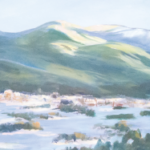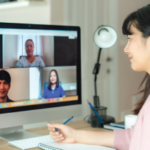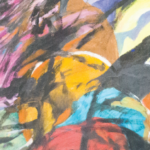We built in a few scheduled breaks to the interview day to ensure everyone had the opportunity to shut off their cameras, regroup, stretch, eat, etc. In some ways, it has been more efficient than in-person interviews. But, of course, there’s something lacking in the personal interaction that cannot be replaced virtually. I think the video-based interview process has a role and is filling a necessary void, but I cannot say that I prefer it to in-person interviews. The flow of conversation and the non-verbal cues that are part of in-person interviews cannot be truly replicated virtually.
Dr. Kolfenbach: The traditional interview format can be overly formal at times. When you add Zoom to that, the exchange can feel even stiffer. During the interview day, we had several opportunities in which all of the applicants—typically three or four each day—would have a chance to talk with me, the fellows or other faculty members. It can be hard in that setting to know who is supposed to talk next, because the flow of conversation is a bit less natural than when you are in a room with people. The upside, however, is that virtual interviews are a huge cost savings for applicants.
Dr. Blanco: We interviewed five applicants per day, but we interviewed each applicant in two-hour blocks, which meant the virtual interviews were truncated relative to how it would have been previously when each applicant would have spent half a day here. We used breakout rooms to do round-robin-style interviews. This, however, allowed us to be respectful of faculty time. Faculty could still see more patients.
In the end, it worked out well, and we received positive feedback from applicants who otherwise would have flown in and out. In many cases, applicants visit New York City and bunch interviews with different programs together. Even when they do that, however, the visit to New York City can be costly.
Faculty were also pleased they no longer had the burden of grand rounds and journal club followed by two to three hours of interviews. Instead, faculty only had to commit to two hours of interviews.
TR: Are you seeing more geographic and cultural diversity in applicants?
Dr. Dua: Video-based interviews removed the barriers of travel, finding coverage and finding the time and money for a physical interview. I was expecting the volume of applicants to significantly increase given these changes in barriers, but the overall distribution and volume of applicants has been consistent with prior years. I think that, with the restrictions and fears resulting from COVID, there is less geographic diversity than before, while the cultural diversity has remained consistent.



